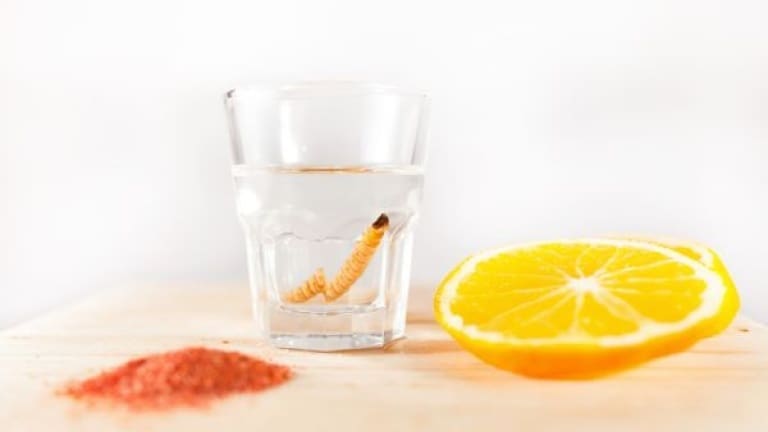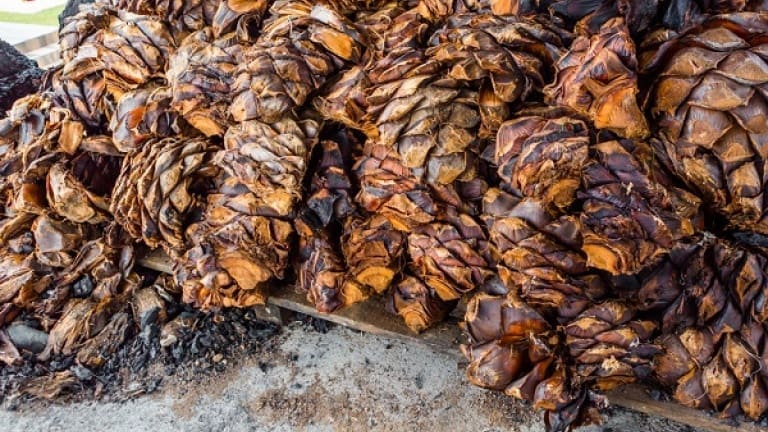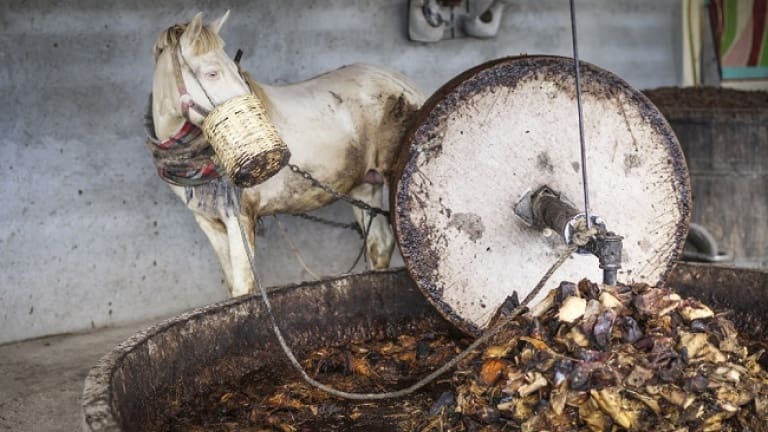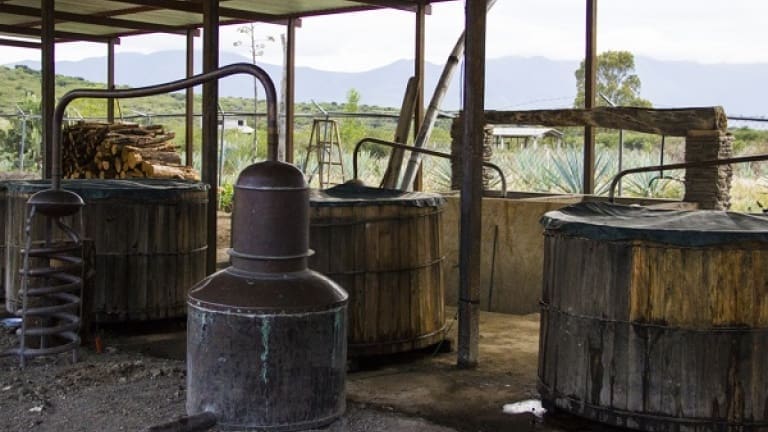Uncover the World of Mezcal: History, Flavor, and More

Mezcal, or mescal, is the famous distillate of fermented agave that must first be cooked in typical ovens, then crushed, and finally fermented.
It is produced in Mexico, and many of you will already know it: it is a delicious distillate that offers incredible aromas, some fruity and sumptuous, some floral, some spicy, and then an incredible smoky background due to cooking the pinas underground and in old ovens.
But let’s get straight to the question that interests most of the public: what are the differences between mezcal and tequila?
Differences between Mescal and Tequila
Much of what we will write also applies to tequila, which is to all intents and purposes a mescal; indeed, every tequila is a mescal, except that it is specific to a small area of Jalisco and is made exclusively with blue agave, the agave tequilana.

Mescal can instead be produced with any type of fermented agave juice, even in blends; there are at least 30 in Mexico, among which we remember the Espadin agave as the main and most valuable one.
The main difference between mezcal and tequila is the quality of the production. While tequila has now become a worldwide phenomenon, which has led to industrialization and mass production at many distilleries, which in turn have ended up in the portfolios of food multinationals, mezcal is a distillate still made at an artisanal level.
We don’t want to say “homemade,” but very often distilleries are family affairs, not only as a business but also as a source of pride that brings prestige to the community. It is no coincidence that it is said that each mezcalero leaves his own brand and personality in the mezcal he produces, and in fact, the most famous are acclaimed by an increasingly large audience of enthusiasts. While there are some excellent tequila brands, there are no individual producers who can be called alembic artists.
Generalizations are silly, of course. There are also artisanal tequilas, but many of them are made in autoclaves and continuous column stills and fermented with chemical yeasts.
In the making of mescal, the ovens are underground ones, dug into the earth. They are very simple. They are just holes surrounded by volcanic stones, like the traditional one used in Sardinia for making porceddu. Another big difference is the distillation, which is slow and done in pot stills. Only the indigenous yeasts that are on the pinas are used; no dyes, additives, or sugar syrup are added. Obviously, in order to be called mescal, it must be made with 100% agave.
How mezcal is made
But let’s get to the production, which is 400 years old. The Jimador selects the ripe pinas, which are usually 8–12 years old, no less, and then they are cut and peeled with the famous coa, that sort of spade-halberd, to eliminate any thorn and the hardest part of the peel, and then we move on to cooking, the most delicate phase of all mescal production.
Overcook the agave, and it will be very smoky; cook it too little, and the sugar content will be low. Finding the right balance when turning agave into sugar is a delicate process that requires a lot of sensitivity.

The oven is filled with wood, a fire is lit, and the embers are covered with stones, on top of which the pinas are placed. Everything is covered with peels and agave leaves to create a protective layer, and finally earth is placed on top to seal the oven. The fruits should be cooked for at least 24 hours, if not 48 hours.
But why are agaves cooked?
The sugars are concentrated in this way; it resembles a large grilled pineapple and is also sold as a snack in many areas of México; the street food agave is sucked, chewed, and then spitting out due to its fibrous nature.

If, on the other hand, you want to make mescal, you will have to crush the cooked agave with a stone wheel, the famous ones pulled by donkeys, rudimentary tools that work slowly. In this way, the fibers are pulped, the juice, the aguamiel, is collected in wooden vats, water is added, and so the fermentation begins.

When the sugar has been transformed into alcohol, the aguamiel is distilled with discontinuous copper stills, exactly the same as the slow and artisanal distillation also used for whisky.
The process is very slow; drop by drop, mescal is produced, concentrating the alcohol. In the case of mescal, the distillation is very careful, supervised by a master distiller with great sensitivity—heads and tails are obviously discarded. Usually there are two distillations, but often mescals are also distilled three times, especially for the more velvety and soft products produced for European drinkers.
If you’ve noticed, there are two steps similar to other processes: the cooking is similar to the malting of whiskey barley, while the crushing wheel is reminiscent of sugar cane being pounded. There are similarities, but mezcal has both, so don’t think that real mezcal and tequila are the ones on sale for 8 euros in cash and carry; those are industrial products produced with assembly line methods.
Mescal production area
The main area, which boasts almost 60% of production, is the Oaxaca region in southern Mexico, but it is also produced in the regions of Oaxaca, Durango, Guanajuato, Guerrero, San Luis Potosi, Tamaulipas, Zacatecas, Michoacan, and Puebla. To make a rough distinction, we can say that traditionally, mescal is typical of southern California, while tequila dominates the north.
History of Mescal
It has been made this way for 400 years and is one of the few positives of the Spanish invasion of America. Before the mass extermination, the Aztecs, but also many other Mesoamerican peoples, already drank a sort of wine or beer produced with cooked agave, an agave wine called pulque.
When the conquistadors arrived, they introduced the distillation process, and thus Mescal was born; the evolution was quite natural. The pulque was distilled and turned into a clever work of art with unique tastes and smells.
Mescal price
Don’t let the price of mescal scare you: an entry-level bottle costs a lot compared to the bargain prices of tequila. as in the case of Mezcal Vida del Maguey, which costs at least 30 to 35 euros.
But as mentioned, this is an artisanal distillate with a human face, made with the painstaking workmanship of a medieval monk, that has nothing to do with the flat-tasting tequila that dominates the market.
Just think that some producers have made a mescal with the blue agave, San Luis del Rio Azul, and it is spectacular, but they would never dream of calling it tequila.
Certain great-value bottles can cost up to 250 euros, but consider mescal to be a thick Scotch single malt whisky rather than the battle distillate used to make tequila boom boom.
Why do they put worms in bottles of mezcal?
Let’s dispel a myth: that of the worm placed in the mezcal bottle being a commercial gimmick born in 1950, when a mezcal producer found, by pure chance, some worms inside the distillate and thought well that they could add flavor and at the same time impress the public.
The worm is usually a gusano rojo or a chinicuil, the worm of the maguey, a harmless larva that lives inside the agave.
On an organoleptic level, it does not change much. The really tough ones reduce the mescal worm to a pulp and combine it with salt, then accompany it with a mescal shot; you do as you like.
Eating the worm won’t kill you, and it doesn’t hurt, but if you are tasting a high-quality distillate, you will never find a larva inside. You will never find a worm in tequila.
How to drink mezcal and which cocktails to make
Never drink mezcal with salt, lemon, or bum-bum-style tonic water; drink it neat, chilled at 8–10 degrees. It is not a distillate to be downed as if there were no tomorrow, but to be sipped.
There are not many cocktails to make; it is still a virgin distillate for mixology, but here are some drinks not to be missed: Mono Loco, Mezcalzone, Negroni with mezcal, Cocktail Fidelio.
